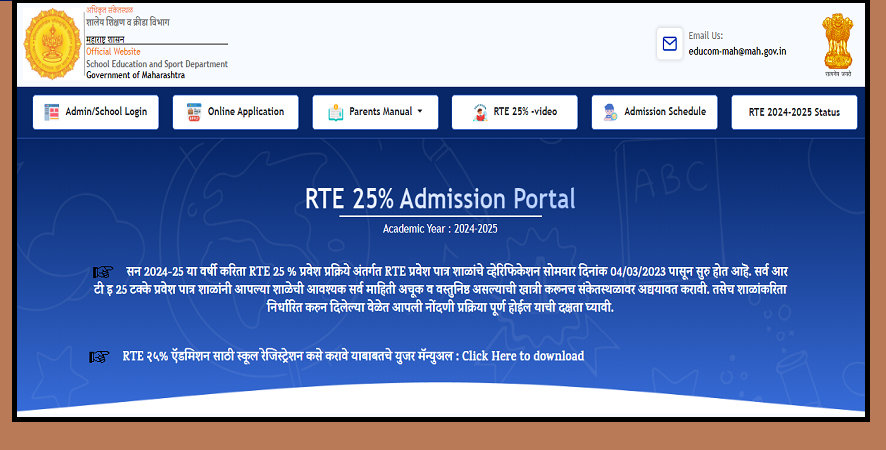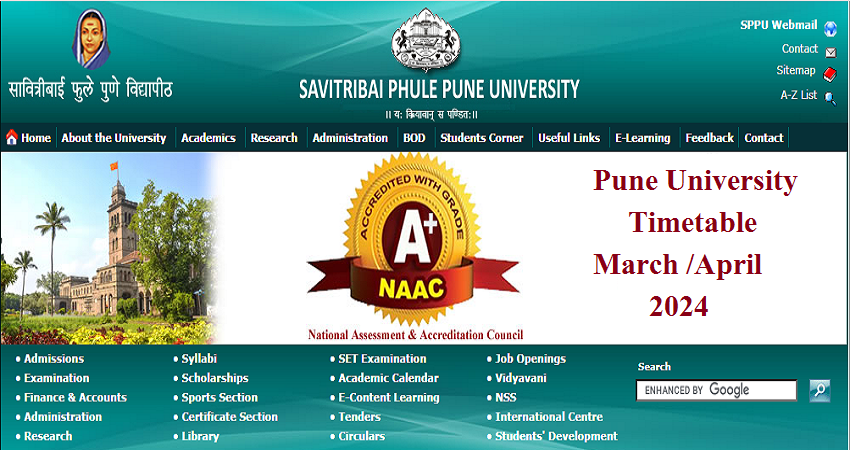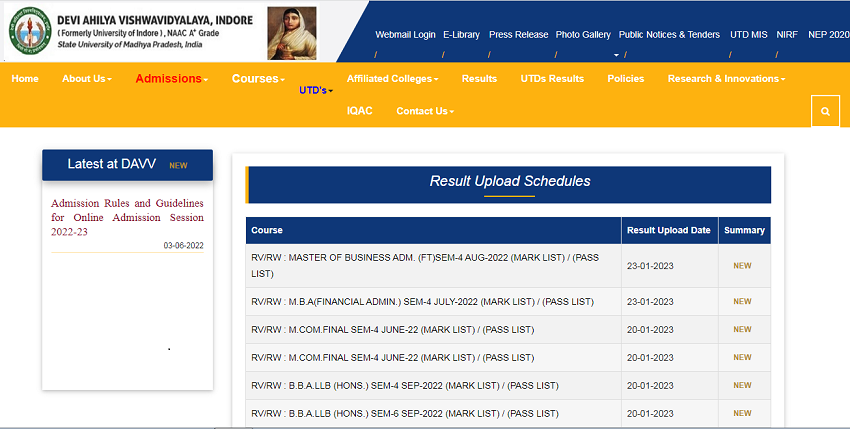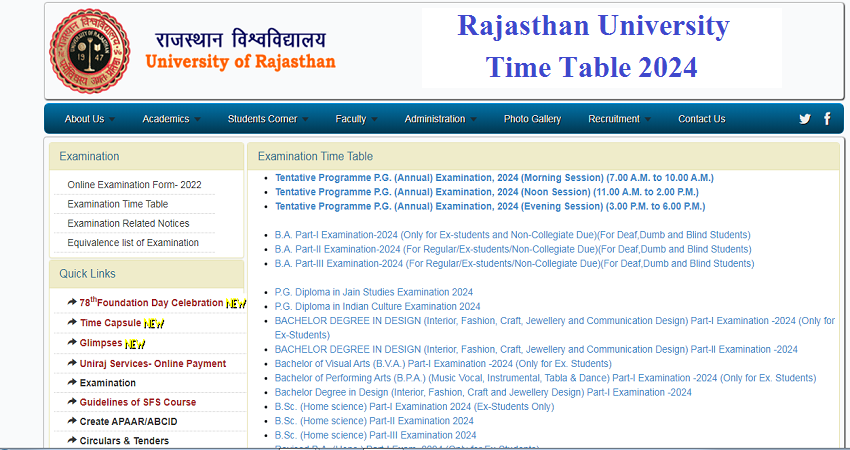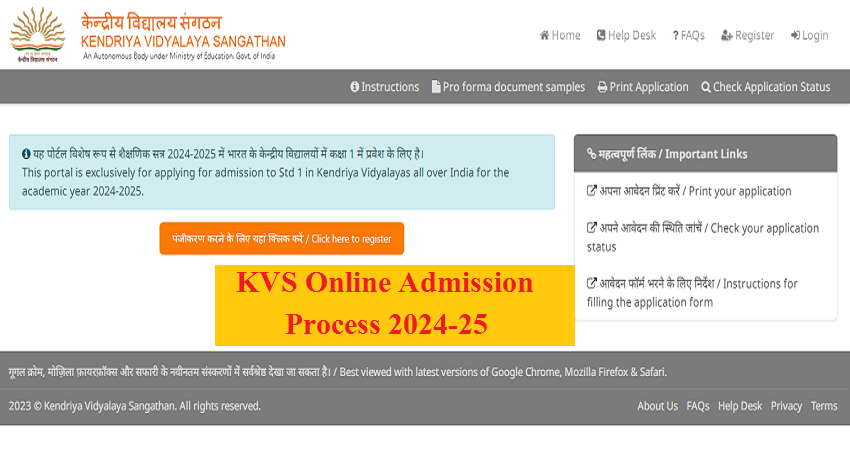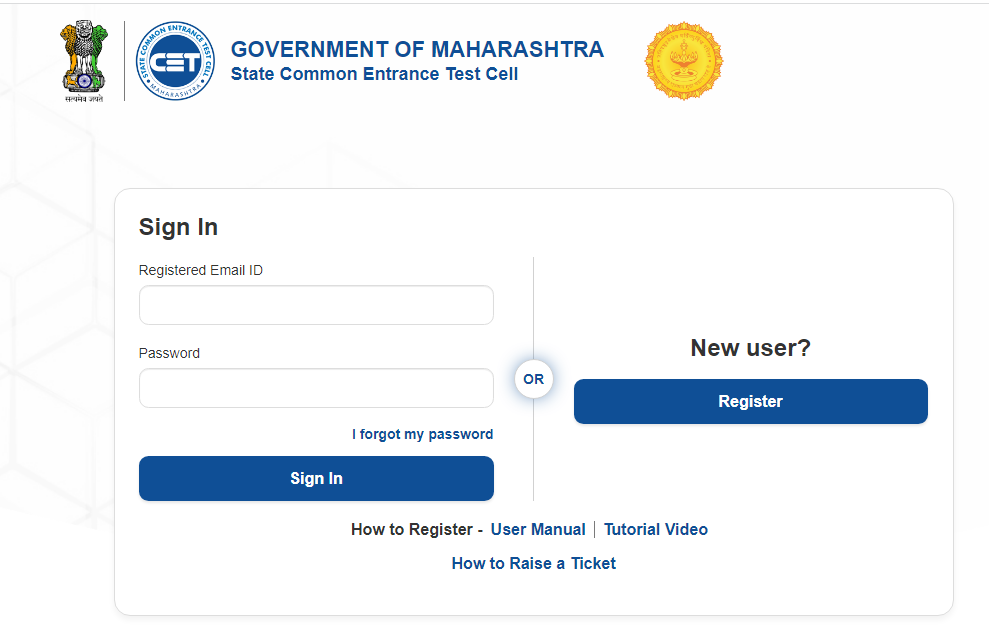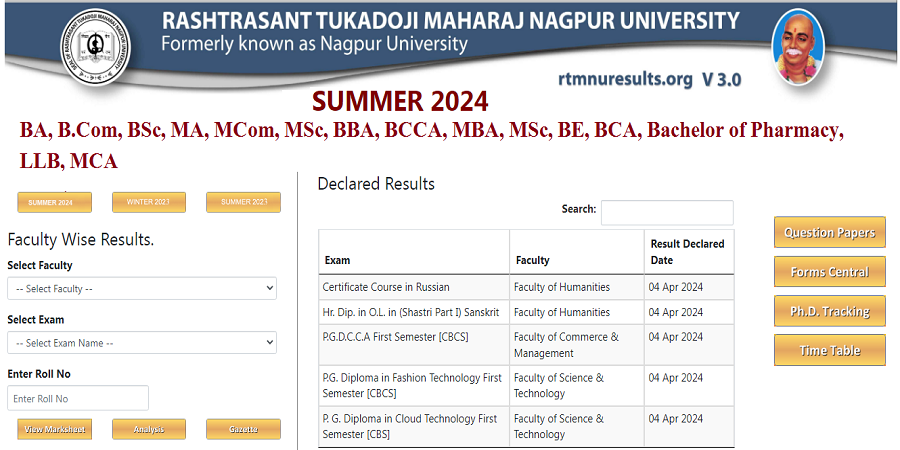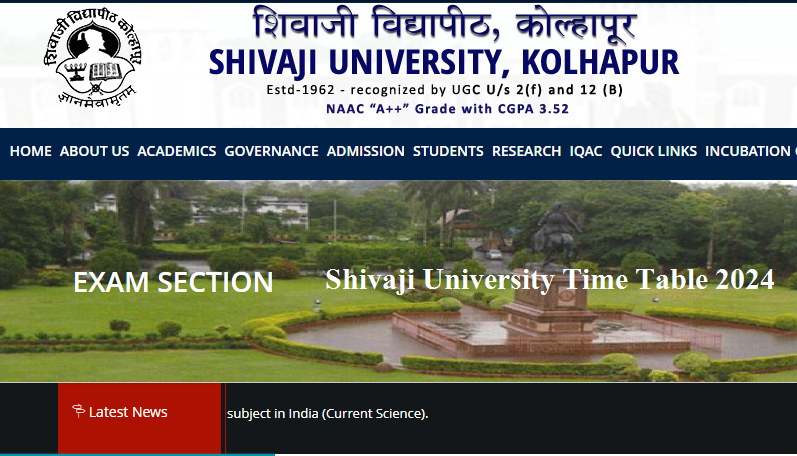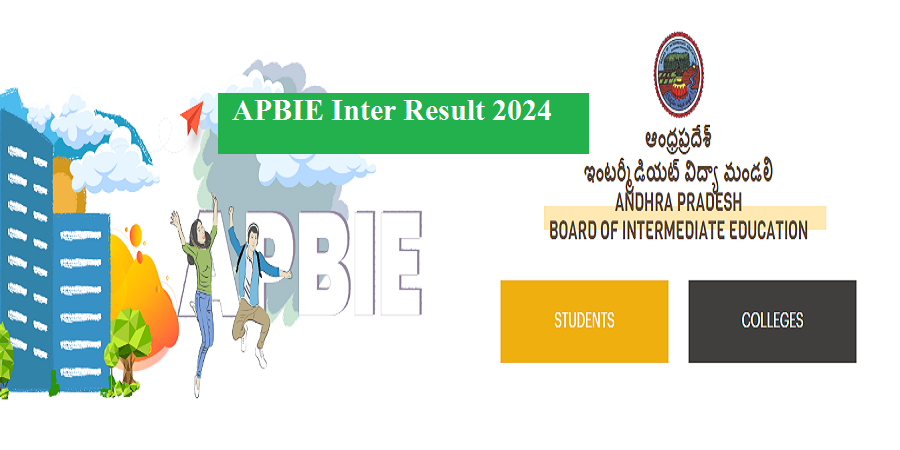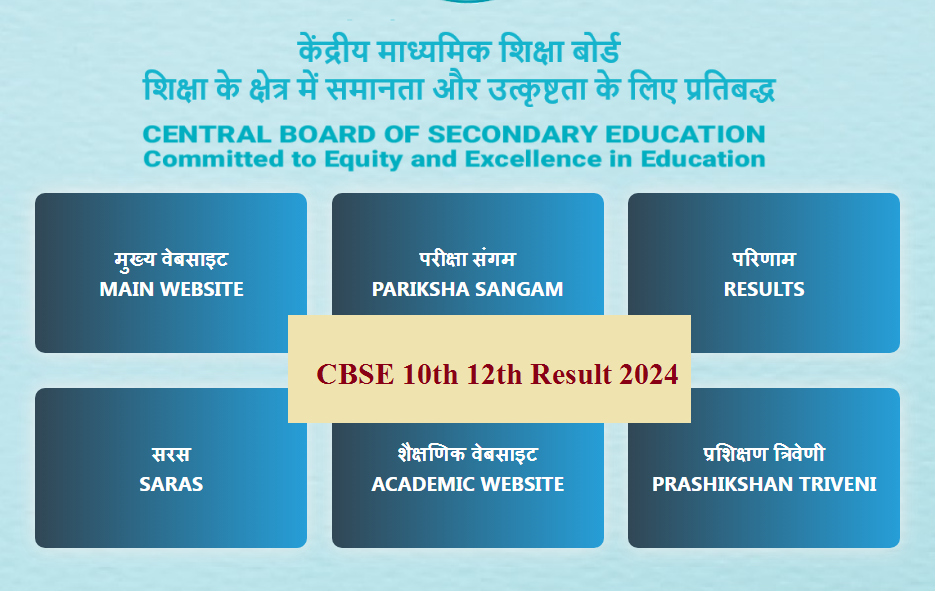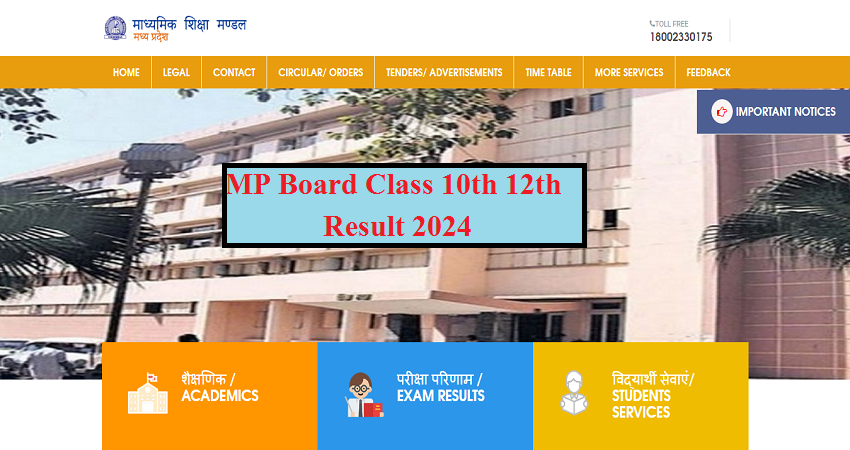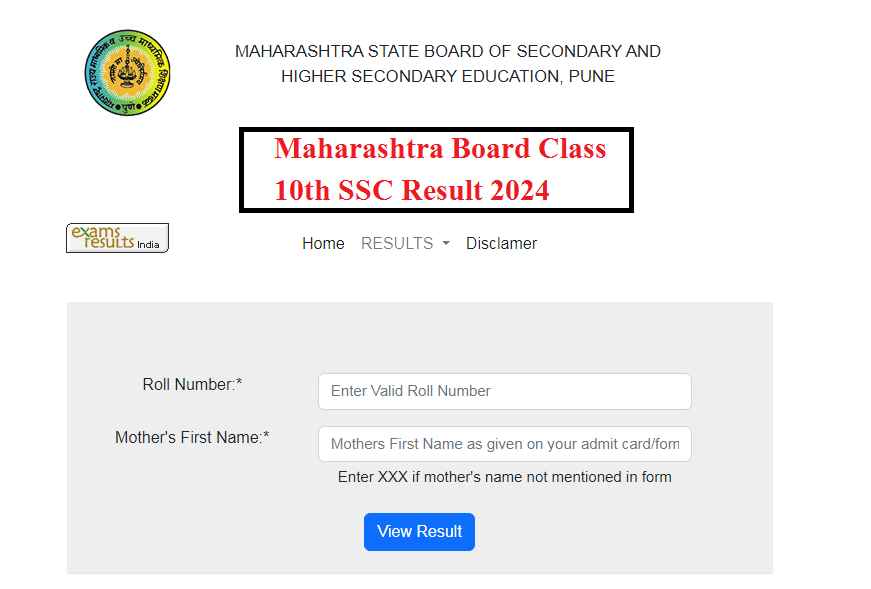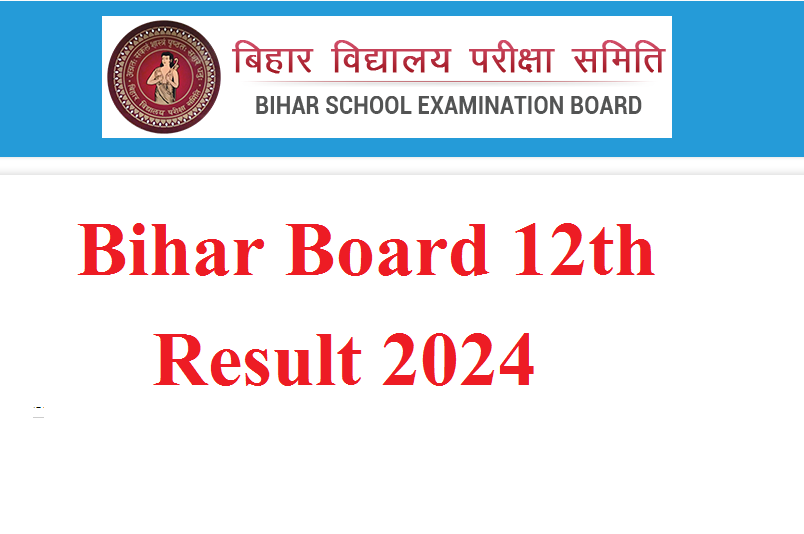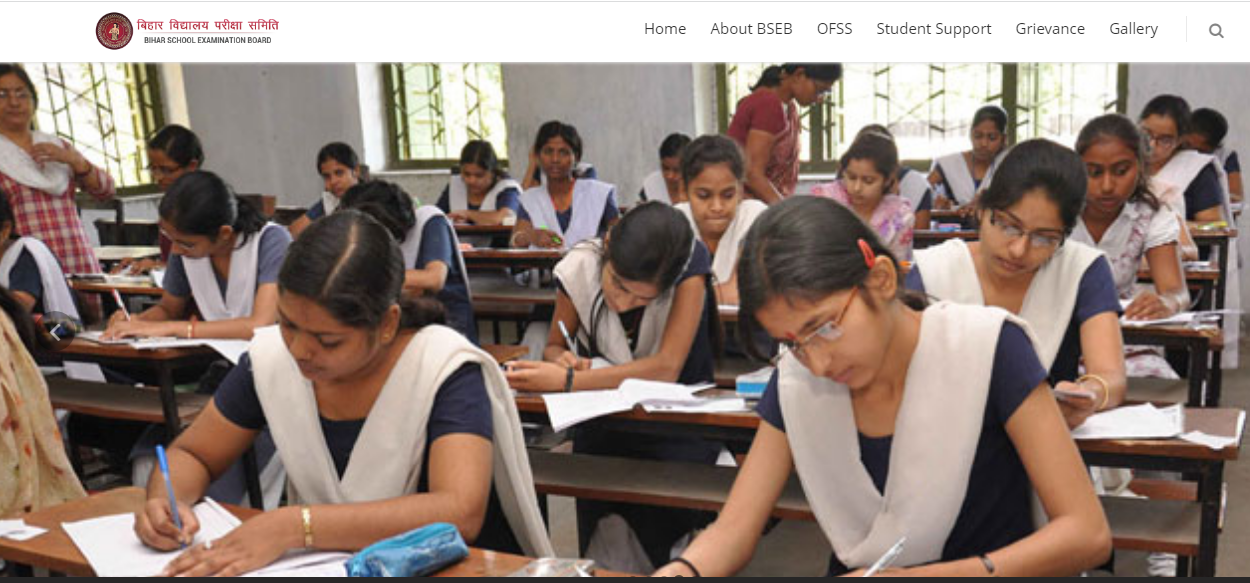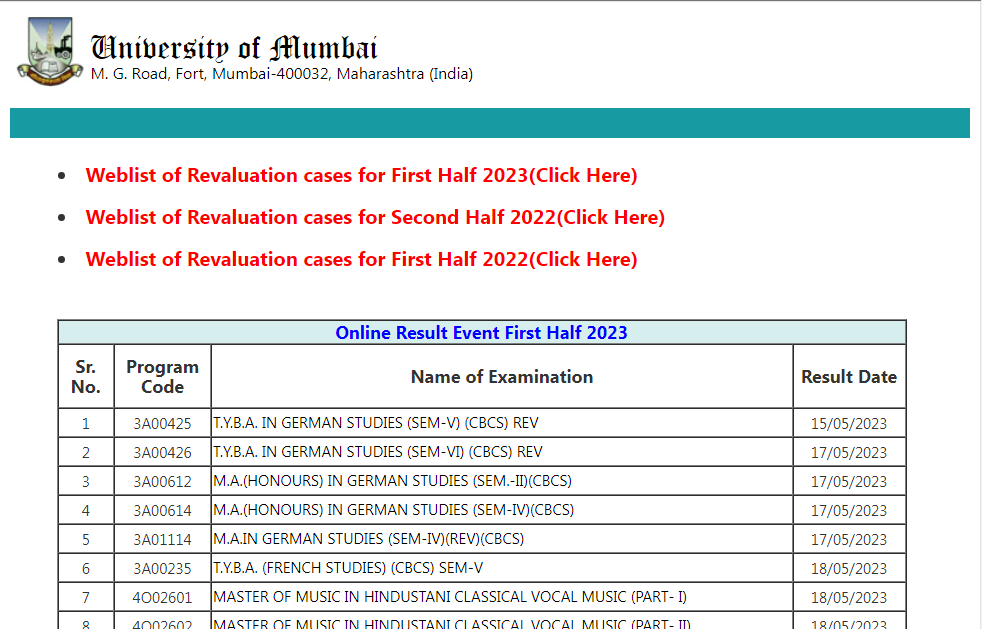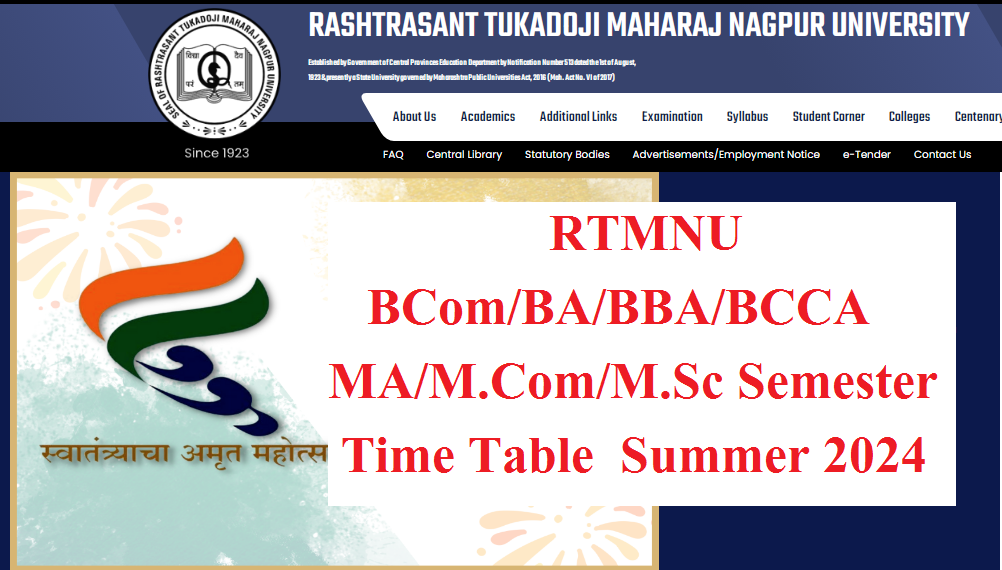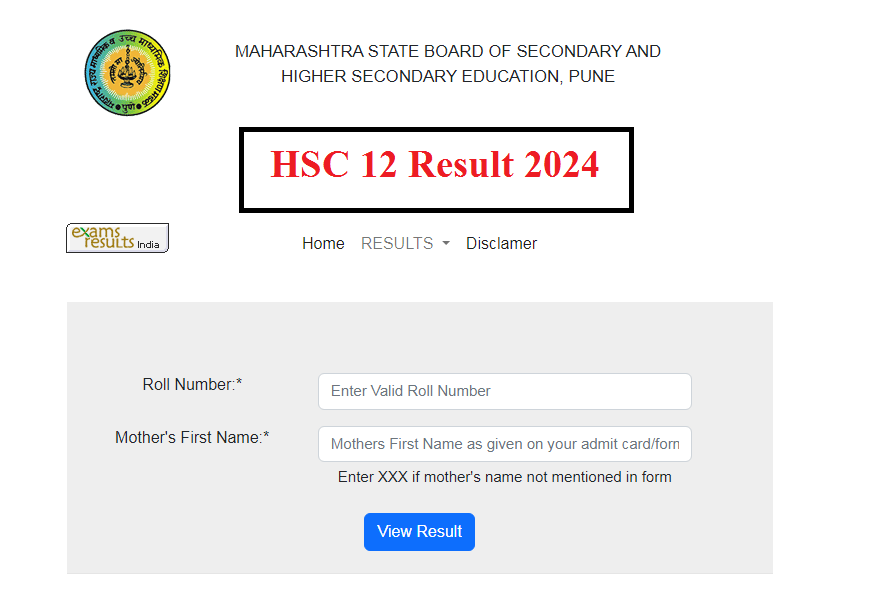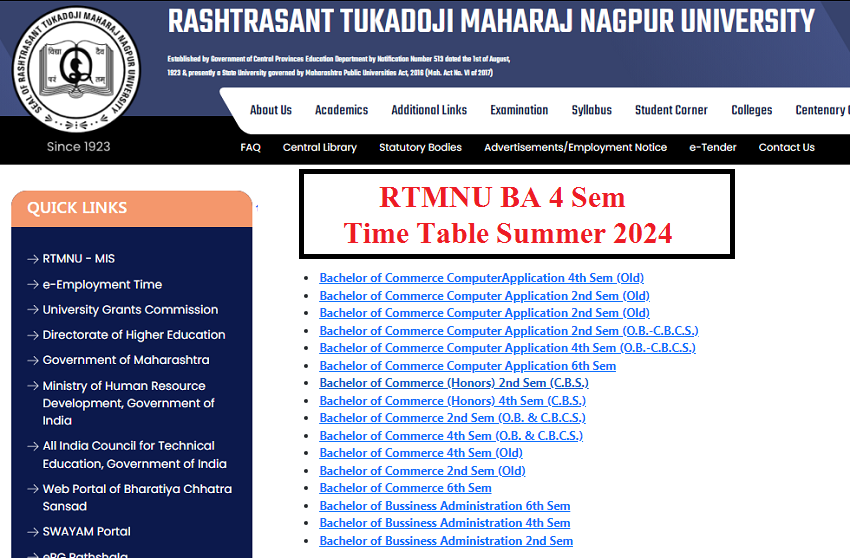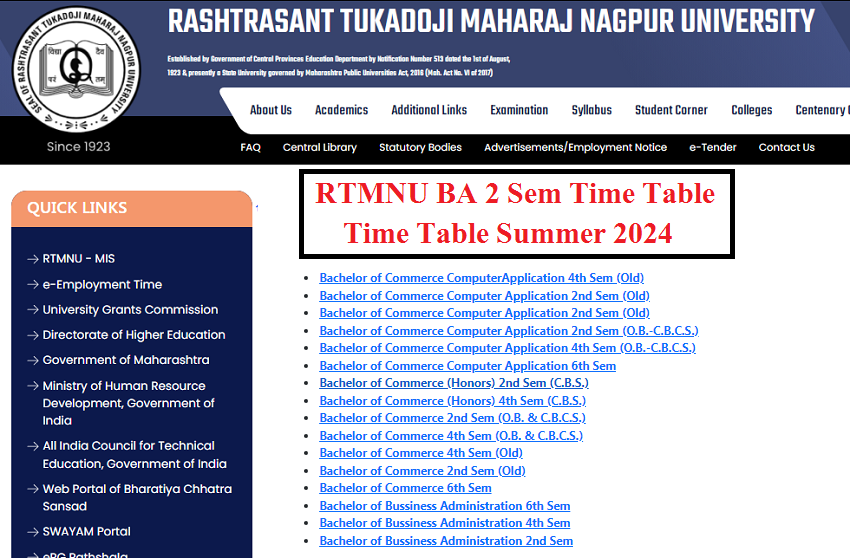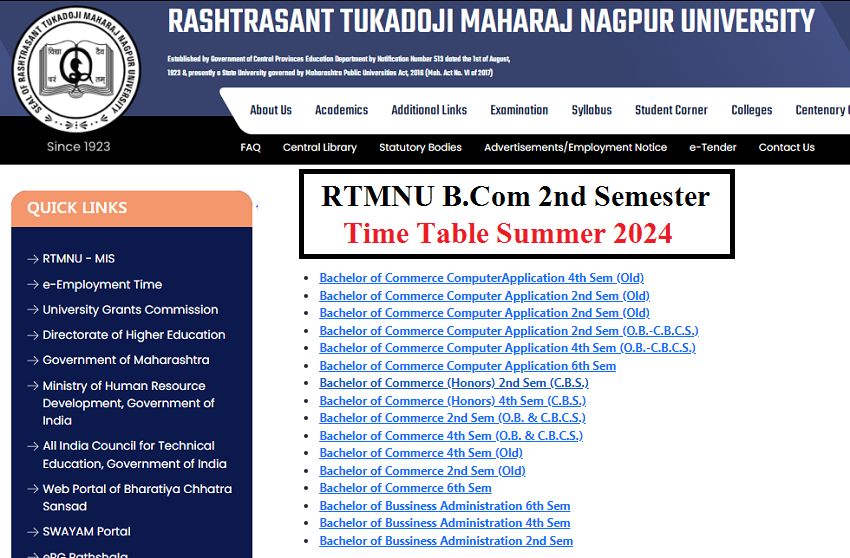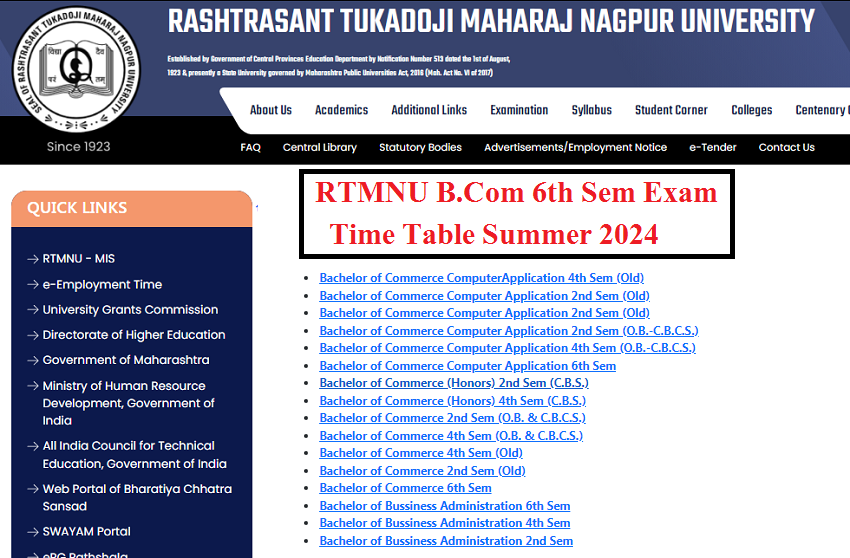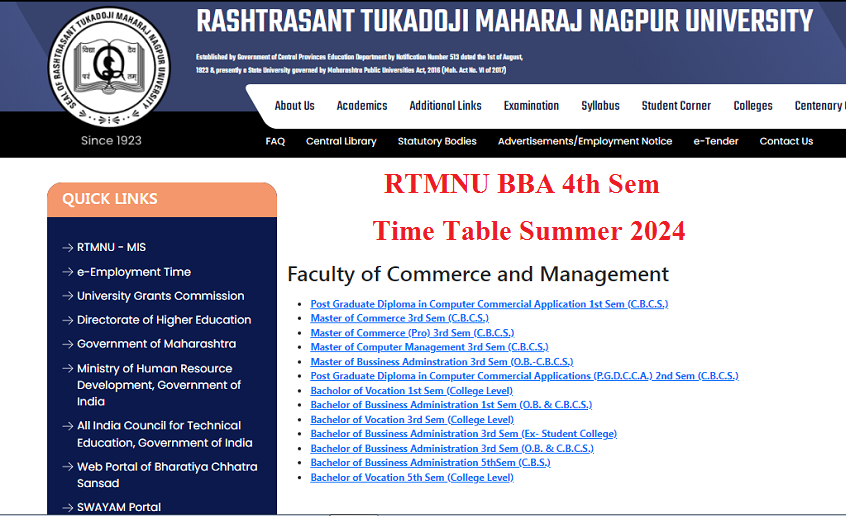SGBAU Revised B.Tech Sem 3 Syllabus 2021
SGBAU Revised B.Tech Sem 3 Syllabus 2021
SGBAU Revised B.Tech Sem 3 Syllabus 2021|Amravati University B.Tech Syllabus Part 2| SGBAU Second Year B.Tech Syllabus
Amravati University New Syllabus 2021 is available for Downloading. The latest SGBAU Revised B.Tech Sem 3 Syllabus 2021 is published by Amravati University. The students looking for this syllabus can Download the PDF Syllabus from given respective Links. We keep adding More details about this Syllabus on this page. We given below the Details updated new syllabus. Students of SGBAU are requested to go though the detail syllabus. You can also download the PDF of syllabus from given link. For More updates keep visiting us.
SGB Amravati University Revised B.Tech Chemical Technology Sem 3 Syllabus 2021 -SGB Amravati University B.Tech Chemical Technology Third Semester New Revised Syllabus is given below for Downloading. The students can Download the respective Syllabus from following given details. Just go through the given links & read the given syllabus carefully. Amravati University Second Year New Semester Online Detail syllabus given below.
SGBAU Revised B.Tech Sem 3 Syllabus 2021
SYLLABI PRESCRIBED FOR FOUR YEAR DEGREE COURSE
BACHELOR OF TECHNOLOGY CHEMICAL TECHNOLOGY
SEMESTER PATTERN (CHOICE BASED CREDIT GRADE SYSTEM)
SEMESTER : THIRD
APPLIED ORGANIC CHEMISTRY
Course Objectives:
1. Students will get introduced to aromatic compounds, heterocyclic chemistry and natural products, properties and applications of phenols, ethers, epoxides, amines and their derivatives.
2. Student will get the knowledge about the chemistry of unit process, kinetics and mechanism of Nitration, sulphonation and sulphation.
3. Students will get introduces to polymer chemistry and technical preparation of some polymers.
Course Outcomes:
Students will be able to –
1. Analyzed aromaticity and list properties of aromatic compounds.
2. Write simple mechanisms of aromatic reactions.
3. List some of the heterocyclic chemistry and chemistry of natural products.
4. List some properties of amines and their derivatives.
5. Know the unit process like halogenation, sulfonation and nitration.
6. Synthesized some simple organic compounds, polymers and understand the kinetics and mechanism of unit processes.
SGBAU Revised B.Tech Sem 3 Syllabus 2021
SECTION-A
Unit I :
1. Aromatic hydrocarbons : Preparation, properties and applications of Benzene, and Naphthalene
2. Heterocyclic compounds: Classification of heterocyclic compounds, preparation, Properties and applications of pyrrole, thiophene, & furan
Unit II :
1. Phenols : Basic concepts, classification, preparation, properties and applications of Phenol, resorcinols, cresols, catechol.
2. Ethers, epoxides and sulphur acids: Methods of preparation, General reaction, ethylene and propyleneoxides – their reactions and applications
Unit III :
Amines and their derivatives : Basic concepts, classification of amines, preparation, properties and
applications of aniline and Benzene diazonium chloride.
Natural products: Terpenes, alkaloids, plant pigments, their applications
SECTION-B
Unit IV :
1) Study of Chemistry of Unit Process : Nitration, nitrating agents, kinetics and mechanism of aromatic
nitration. Technical preparation of nitrobenzene and nitronaphthalene.
2) Study of Chemistry of Unit Process : Sulphonation and Sulphation : Sulphonating & Sulphating
agents, kinetics of mechanism of sulphonation. Technical preparation of Sulphonation of Benzene
Unit V :
1) Study of Chemistry of Unit Process : Halogenation : Halogenating agents, thermodynamics, kinetics Technical preparation of DDT and Vinyl chlorides.
2) Principles of polymer chemistry and practices: Classification of polymerization. Types of polymers. Technical preparation of Polyvinylchloride, Bakelite.
Unit VI:
1) Carbohydrates: Basic concepts, classification, industrial applications of glucose, sucrose and starch.
2) Chemicals in food products: Study of preservatives, sweetening agents and antioxidants.
Books Recommended :
1) Organic Chemistry (Vol. I & II): I.L.Finar, Longman Group Ltd. And the English Language Book Society, London, 6th edition.
2) Advance Organic Chemistry: Fieser and Fieser, Asia Pub. House, Mumbai, 1961.
3) Unit Process in Organic Synthesis: P.H.Groggins, McGraw Hill, 5th edition.
SGBAU Revised B.Tech Sem 3 Syllabus 2021
APPLIED PHYSICAL CHEMISTRY
Learning Objectives:
To understand the effect of structure on properties of polymer, concept of weight average and number average molecular weight of macromolecules.
To understand the electrical properties of fluid.
To know the rate, order, energy of activation of chemical reactions and their determination.
To know the use of kinetics and thermodynamics to elucidate mechanisms of reactions.
To understand the basic concepts, the Ist and IInd Laws of Thermodynamics, Thermodynamic functions and their applications.
To predict the high and low quantum yield photochemical reactions and to know about advanced spectroscopic analysis techniques.
To know the basic concepts and industrial examples of catalysis and adsorption on surface.
Course outcomes :
The course will enable the student to:
Evaluate the structural properties of macromolecules, average molecular weight determination of polymers
by various methods.
Evaluate the specific rate, order and energy of activation of chemical reactions.
Know the fundamental concepts related to homogeneous and heterogeneous catalysis, mechanisms of industrially important reactions, surface phenomenon and adsorption isotherms.
Apply mass and energy balances to closed and open systems ,Rationalize bulk properties and processes using thermodynamic considerations
Distinguish the ranges of the electromagnetic spectrum used for exciting different molecular energy levels in various spectroscopic techniques and spectroscopic methods for identification of compounds.
Know the ion transport & electrical properties of solution solve problems involving transport no, electrode potential and emf of different types of cell.
Contents:
Unit- I :
Ion transport and electrical phenomenon at interface: Specific, Equivalent and Molar conductivity,
Kohlraush’s law and its applications ,Transport number and their determination ,Reversible and reference electrode ,Thermodynamics of reversible electrode, Relation between electrical work done and free energy, Nernst equation
for electrode potential , Standard electrode potential , Electrolytic concentration cell with and without transference,
Determination of pH, solubility and solubility product of sparingly soluble salts, dissociation constant by EMF
measurement, Numerical.
Unit-II :
Polymer science: Number average and weight average molecular weight of macromolecule, Methods of molecular weight determination of macromolecules, Membrane osmometry, Light scattering, sedimentation and
ultracentrifuge methods, Effect of polymer structure on properties of polymers. Numerical on molecular weight
determination.
Unit- III :
Kinetics & Reaction mechanism: Introduction, Rate of reaction, concept of molecularity and order in elementary and complex reactions, differential and integral methods to formulate rate equations of zero, first and second order reactions. experimental methods in kinetic studies, effect of temperature on reaction rate, energy of activation and its determination, steady state approximation and rate determining step, Mechanism of complex reactions, photochemical chain reactions, polymerization reactions. Fast reactions – experimental techniques. Numerical
Unit-IV :
Surface, interfacial chemistry and catalysis: Adsorption , types of adsorption, Adsorption isotherms , Langmuir theory of adsorption, BET adsorption isotherm and it’s application for determination of surface area of fine powder. Homogeneous and Heterogeneous catalysis, Criteria of catalyst, Theory of heterogeneous catalysis, Homogeneous, Lewis acid-base catalysts, organometallic catalysts and industrially examples, Auto and enzyme catalysis. kinetics of reactions on surfaces.
Unit – V :
Thermodynamics and Equilibrium : Statements of the second law; Heat engines, Carnot’s theorem, and Carnot cycle, Mathematical statement of the second law, Introduction of Entropy under the IInd Law to define spontaneity of a process, Temperature- entropy diagram, Introduction of the state functions A & G to determine conditions of Material Equilibrium. Condition of reversibility, Transformation at constant temperature and pressure, Gibbs- Helmholtz equation, pressure – volume and volume – Temperature relationship under isothermal condition for ideal gas. Partialmolar properties, chemical potential, Numerical.
Unit VI:
Spectroscopic techniques and applications : Principles of spectroscopy and selection rules. Electronic spectroscopy. Vibrational and rotational spectroscopy of diatomic molecules. Principle, Instrumentation and Applications of IR, UV & NMR spectroscopy Photochemistry and Modern Analytical techniques: Lows of photochemistry, quantum efficiency and its determination, low & high quantum yield reactions, Atomic absorption spectroscopy, chromatography.
Books Recommended :
1. Physical Chemistry , P.W. Atkins and J.D. Paula, Oxford University Press.
2. Physical Chemistry , K.J. Laidler and J.M. Meiser, CBS Publisher
3. Chemical kinetics and catalysis , R. J. Masel, John Wiley publications
4. Handbook of conducting polymers, Skotheim, Elsenbaumer and Reynolds, Marce Dekker.
5. Fundamentals of spectroscopy ,Banwell, Tata McGraw-Hill
6. Physical chemistry of surfaces, Arthur W. Adamsons, Alice P. Gast, John Wiley publications
7. Principle of Heterogeneous catalysis, J.M.Thomas, W.J. Thomas, John Wiley publications
8. Thermodynamics for students of chemistry, Dr. J. Rajaram & Dr. J. C. Kuriacose, Chand & comp.
STRENGTH OF MATERIALS
Learning Objectives of Subject:
1. TodeterminetheMechanicalbehaviorofthebodyandconstructionmaterialsbydetermining the stresses, strains
produced by the application of loads.
2. To apply the fundamentals of simple stresses and strains.
3. To make one understand the concept of bending and its theoretical analysis.
4. To apply fundamental concepts related to deformation, moment of inertia, load carrying capacity, shear
forces, bending moments, torsional moments, principal stresses and strains, slopes and deflection.
Course outcomes:
At the end of the subject the students will be able –
1. To understand the basics of material properties, stress and strain.
2. To apply knowledge of mathematics, science, for engineering applications
3. To identify, formulate, and solve engineering & real life problems
4. To design and conduct experiments, as well as to analyze and interpret action and reaction data.
5. To understand specific requirement from the component to meet desired needs within realistic constraints
of safety.
SGBAU Revised B.Tech Sem 3 Syllabus 2021
SECTION – A
Unit I:
Mechanical properties: Concept of direct and shear stresses and strains, stress-strain relations, Biaxial and triaxial loading, elastic constants and their relationship, stress-strain diagrams and their characteristics for mild steel, tor steel, Generalized Hook’s law, factor of safety. Uniaxial stresses and strains: Stresses and strains in compound bars in uniaxial tension and compression, temperature stresses in simple restrained bars and compound bars of two
metals only.
Unit II:
Axial force, shear force & bending moment diagrams: Beams, loading and support conditions, bending moment, shear force and axial load diagrams for all types of loadings for simply supported beams, cantilevers and beams with overhangs, relation between shear forces, bending moment and loading intensity.
Unit III:
Stresses in beams (Bending, Shear), i) Bending: Theory of simple bending, section modulus, moment of resistance, bending stresses in solid, hollow and built up section. ii) Shear: Distribution of shear stresses on beam cross sections, impact loads and instantaneous stresses.
SECTION – B
Unit IV:
Torsion: Theory of torsion & assumptions, derivation of torsion equation, polar modulus, stresses in solid & hollow circular shaft, power transmitted by shaft, closed coiled helical spring with axial load. Thin cylinders subjected to internal pressures.
Unit V:
Principal stresses: Biaxial stress system, principal stresses, principal planes, Mohr’s circle of stresses, principal strains. Combined direct & bending stresses.
Unit VI:
Slope & deflection of beams: Slope & deflection in statically determinate beams subjected to point loads, uniformly distributed loads, moments by Macauley’s method. Theory of long columns, Euler, Rankin’s formula.
Books Recommended:
1. E. P. Popov, “Mechanics of Materials”, Prentice Hall of India, New Delhi.
2. S.Timoshenko and O. H. Young, ‘Elements of Strength of Materials’, East West Press Private Ltd., New Delhi.
3. Ferdinard L. Singer, ‘Strength of Materials’, Harper and Row, New York.
4. Shames, I. H., ‘Introduction to Solid Mechanics’, Prentice Hall of India, New Delhi.
5. R. K. Bansal, Strength of materials, Laxmi Publications Pvt Ltd.
6. Junnarkar, S. B., Mechanics of materials.
7. Mubeen, A., Mechanics of solids, Pearson education (Singapore) Pvt. Ltd.
8. Beer and Johston, Mechanics of materials, Mc-Graw Hill.
9. S. Ramamrutham, Strength of Materials, Dhanpat Rai Publishing Co Pvt Ltd.
APPLIED THERMODYANICS
Course Learning Objectives :
1. To study the basic concepts of thermodynamics, thermodynamic systems, work and heat
2. To study the laws of thermodynamics and their applications
3. To study the properties of steam, work done and concept of heat transfer
4. To study the air standard cycles
Course Outcomes :
Students will be able to
1. Understand the basic concepts of thermodynamics, thermodynamic systems, work and heat
2. Apply first law of thermodynamics and application of first law to flow and non-flow processes
3. Apply second law of thermodynamics and understand concept of entropy
4. Understand the properties of steam, work done and heat transfer during various thermodynamics processes with steam as working fluid
5. Understand the concept of air standard cycles
SGBAU Revised B.Tech Sem 3 Syllabus 2021
SECTION–A
Unit-I:
Introduction to basic concepts of thermodynamics, Macroscopic and microscopic approaches, properties of system, state, processes and cycle, thermodynamic equilibrium, types of thermodynamic systems, Temperatures and Zeroth law of thermodynamics, Quasi-static process, Gas Laws and Ideal gas equation of states, gas constant and universal gas constant.
Work and Heat: Definition of work, thermodynamic work, displacement work and other forms of work, Definition of Heat, Work and heat transfer as path function, comparison of work and heat, work done during various processes,
P-V diagrams (10 hrs)
Unit-II:
First law of thermodynamics: Energy of a system, classification of energy, law of conservation of energy law, Joules experiment. Energy a property of system, internal energy-a function of temperature, Enthalpy, specific heat at constant volume and constant pressure. Application of first law to non -flow processes, Change in internal energy, work done and Heat transfer during various non-flow processes.
Unit-III:
First Law applied to flow processes: Steady state, steady flow process, equation for work done in steady flow process and its representation on P-V diagram , mass balance and energy balance in steady flow process, steady flow energy equation and its application to nozzles and diffusers, turbine and compressor pumps, heat exchangers, Throttle valve etc. work done and Heat transfer during steady flow processes.
SECTION–B
Unit-IV:
Second Law of thermodynamics: Limitations of First law, Thermal energy reservoir, heat engines refrigerator and heat pumps, COP and tonne of refrigeration, COP for heat pump and refrigerator, Kelvin-Plank and Clausious statements, their equivalence, reversible and irreversible processes, Carnot cycle, Carnot theorem and its corollary, The thermodynamic temperature scale, Reverse Carnot cycle, Inequality of Clausius. Introduction to Entropy, availability and irreversibility. Principle of increase of entropy.
Unit-V:
Properties of Steam: Triple point and critical point, Sensible heat, latent heat,superheat and total heat of steam. Wet steam, dryness fraction, Internal energy of steam, External work of evaporation, internal latent hear, Specific volume, enthalpy, internal energy and entropy of steam. T-S diagram Mollier chart, Steam tables and their use. Work done and heat transfer during various thermodynamics processes with steam as working fluid. Throttling of steam, determination of dryness fraction using various calorimeters.
Unit VI :
Air Standard Cycles: Ottto, diesel, semidiesel, Brayton, Sterling and joule cycles etc., their efficiencies and mean effective pressure, comparison of auto, diesel and duel cycles. Vapour Cycles:- Rankine and Modified Rankine Cycle. Comparison of Rankine and Carnot cycle, representation on P-V, T-Sand H-S diagram.(No numerical on this unit) (numerical on air standard cycle)
BOOKS RECOMMENDED:
Text Books :
1. Engineering Thermodynamic – by P. K. Nag.
2. Fundamentals of Engineering Thermodynamics;R. Yadav;
3. Thermodynamics Basics and Applied: by V. Ganeshan
4. Thermal Engineerirng : by Mahesh M. Rathore.
Reference Books :
1. Basic Engineering Thermodynamics- by Reyner Joel
2. Thermodynamics- by C.P. Arora.
3. Fundamentals of Classical Thermodynamics- by G. J.Vanwylen.
4. Engineering Thermodynamics; P. Chattopadhyay; Oxford
5. Engineering Thermodynamics; Gordon Rogers, Yon Mayhew; Pearson.
PROCESS CALCULATION
Course objectives :
1. Students will learn the basic and fundamentals of chemical engineering operations and processes.
2. Students will understand the material balance and energy balance of various unit operations and unit processes.
3. Students will learn how to formulate and solve the problems related to material and energy balance with or
without chemical reaction.
Course Outcomes:
.After successful completion of this course student will be able to
1. Understand the concept of basic chemical calculations
2. Understand the concept and application of theory of proportions
3. Determine the humidity with/without using a psychrometric chart.
4. Make the material balance over unit operations and processes.
5. Make the energy balance over unit operations and processes.
6. Solve the problem of fuels and combustion.
SECTION A
Unit I: Introduction to unit operations and unit processes, Units and dimensions, Atoms, moles and molecular weight, mole and mass fraction, Composition of solids, liquids and gases, Concept of Normality, Molarity and Molality, PPM (Parts Per Million), Ideal Gas Law, Dalton’s Law, Partial Pressure, Amagat’s Law, Average Molecular Weight,Density of Gas Mixture, Raoult’s Law, Henry’s Law, Vapour Pressure, Clausius Clapeyron equation, Cox Chart,.Humidity and saturation, Humidity Chart, and their application.
Unit II : Material balance without chemical reaction stoichiometry and unit operations Distillation, Absorption,
Extraction, Crystallization, Drying, Mixing, Evaporation. Recycle, purge and Bypass calculations.
Unit III : Material balance involves chemical reaction, Principle of stoichiometry, simple oxidation reaction, multiple chemical reaction, percentage Conversion, percentage Yield, and selectivity, calculation involving combustion of gases, liquid and solid fuel. Recycle, purge and bypass calculations. Introduction to unsteady state material balance
SECTION B
Unit IV : Energy balance: open and closed system, heat capacity, calculations of enthalpy changes, enthalpy changes for phases transitions, evaporation, Solution and mixing, clausius clapeyron equation.
Unit V: Energy balance with chemical reaction, calculation of standard heat of reaction, heat of formation, heat of combustion, Hess law, Effect of temperature on heat of reaction; adiabatic flame temperature calculations.
Unit VI : Heating value of fuels, calculations involving theoretical and excess air, heat and material balance of
combustion processes.
References :
1. Bhatt, B. I., Vora, S. M., “Stoichiometry”, Fourth Edition, Tata McGraw Hill Publishing Company Ltd, 2004.
2. Narayanan K V and Lakshmikutty B, Stoichiometry and Process Calculations, Prentice Hall of India Pvt Ltd, New Delhi 2006.
3. Sikdar, D. C., “Chemical Process Calculations”, Prentice Hall of India.
4. Himmelblau, D. M., Riggs, J. B. “Basic Principles and Calculations in Chemical Engineering”, Eighth Ed., Pearson India Education Services, 2015.
5. Hougen. O. A, Watson K.M. and Ragatz R.A. “Chemical Process Principles, Part -I, Material and Energy Balance”.
APPLIED ORGANIC CHEMISTRY- LAB
Course objectives:
1. Students should be familiar with common organic compounds, should identify them and should know
simple organic preparation and separationmethods.
2. Students will get introduced to aromatic compounds, heterocyclic chemistry and natural Products.
Course outcomes:
1. Students will be able to list steps for identifying simple organic compounds
2. Students will be able to list some methods of separation of organic compounds
3. Student will be able to synthesize simple organic compounds.
Content:
1. Identification of an organic compound through elemental analysis, group detection, physical constants (m.p and b.p) and derivatisation.
2. Separation and purification of binary mixtures of the type: water soluble-water insoluble, both watersoluble, liquid-liquid by distillation, dissociation – extraction , crystallization, etc.
3. Simple organic preparations:
i) Acetanilide
ii) Nitro Acetanilide
iii) Aspirin
Books Recommended:
1. Practical Organic Chemistry, by I.L. Finar
2. Laboratory hand book of organic qualitative analysis and separation, by Kulkarni V. S. D. Ramchandra & co. Pune.
APPLIED PHYSICAL CHEMISTRY- II – LAB
Course Objectives: To provide the practical knowledge of analysis techniques by classical and instrumental methods for developing experimental skill to built technical competence.
List of Experiments:
1. Determination of viscosity average molecular weight of polymer.
2. Determination of order of reaction and specific rate constant of hydrolysis of methyl acetate.
3. Study of kinetics of second order reaction.( Saponification of ethyl acetate & reaction between potassium per sulphate & potassium iodide)
4. Determination of relative strength of two acids by kinetic study of reaction
5. Determination of energy of activation of reaction
6. Determination of equivalent conductivity of strong electrolytes at infinite dilution.
7. Determination of transport number by EMF measurement.
8. Determination of equivalence point of titration by conductance measurement.
9. Potentiometric titration between strong acid and strong base.
10. Verification of Beer- Lambert’s law and determination of concentration of unknown solution.
11. Verification of Freundlich and Langmuir isotherm.
12. Determination of refractive index.
13. Determination of solubility of sparingly soluble salts by EMF measurement.
14. Determination of heat of neutralization & ionization of acetic acid
15. Determination of ∆H and ∆S of monobasic acid by measuring its solubility at different temperatures.
16. Determination of specific rotation of cane sugar by polarimetry.
All above experiments are to be arranged in the laboratory. Minimum 08 experiments are required to be performed
by the student to complete the term work.
Course outcomes: After completion of this course the students shall be able to :
1. Understand the objectives of their experiments.
2. Follow the proper and safe procedure to get the accurate results.
3. Record and analyze the results.
4. Interpret the results through proper writing in laboratory journal
Books Recommended :
1. Experiments in Physical Chemistry, David P. Shoemaker, Carl W. Garland, Jeffrey I. Steinfeld
2. Experiments in Chemistry, Dr. D. V. Gahagirdar, Himalaya Publishing House
3. A Text Book of on experiments and calculations- Engg. Chemistry, S.S. Dara, S. Chand & Comp. ltd.
STRENGTH OF MATERIALS – LAB
List of Practical’s in Strength of Material Lab (Minimum any eight practical from the list should be performed)
1. Tension test on metals.
2. Compression test on metals.
3. Shear test on metals.
4. Impact test on metals.
5. Hardness test on metals.
6. Torsion test on metals.
7. Deflection of beams.
8. Modulus of rupture test.
9. Buckling of columns.
10. Deflection of springs.


